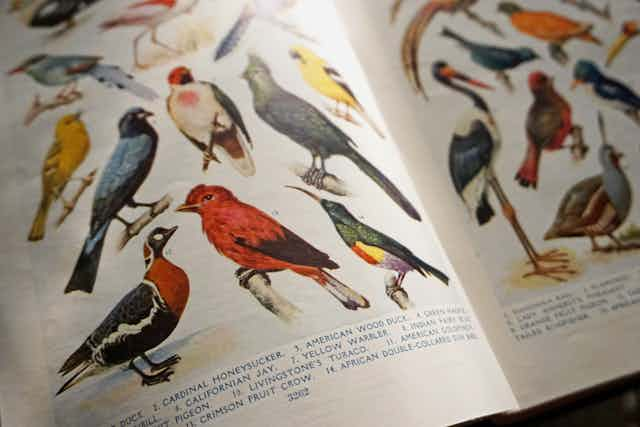In its January 26 1948 issue, Life magazine published a feature showcasing the “102 Great Ideas” of western civilisation. The project was the brainchild of Mortimer Adler, a professor of philosophy and law at the University of Chicago and his boss, Robert Maynard Hutchins, then the university’s chancellor and the director of the Encyclopedia Britannica, which the university had owned since 1943.
Hutchins and Adler had identified what they believed were the 432 great books of western civilisation, which the encyclopedia planned to publish as a complete set. To allow readers to navigate this collection, a team of researchers prepared an index. Adler’s Syntopicon, as the index has since become known, would go on to be published as volumes two and three of the encyclopedia’s Great Books of the Western World 54-volume compendium.
In the double-page group portrait heading Life’s extended feature, Adler and the encyclopedia’s William Gorman pose on either side of the gathered indexers. Between them sit 102 index-card boxes, labelled alphabetically.
Devised at a time before computers were widely available, the index was certainly an impressive achievement. It had taken 24 researchers some five years to complete by hand, and had cost nearly a million dollars to produce.
The results, however, pose more questions than answers about who exactly decides what counts as knowledge. Still today, politics and power structures determine which books are “great” – and which are not.

Categorising knowledge
Hutchins and Adler believed that the Syntopicon presented the most important and comprehensive collection of human knowledge to date. To their minds, almost every idea in the world was included in the identified reference books. These ranged from #1: Angel to #102: World – which took in, among other things, Beauty, Chance, Habit, Rhetoric, Slavery, Tyranny and Will, with each counting more than 30 subdivisions.
From the outset, people homed in on problems with the selection process. The (non-bylined) Life article highlighted that all 71 authors of the 432 books were men, ranging from Homer to Freud. It also noted that while “man” was the subject of a section all its own, “woman” was not featured as a main idea, but instead a subdivision of the Family, Man and Love sections.
In excluding women from both being taken seriously as scholars and being seen as a topic worthy of consideration, the index reinforced and replicated, in printed form, the biases and power structures that had oppressed women for so many years.
Researchers also pointed out that none of the books were by authors of colour. Entire areas of scholarship were disregarded, for being, as one commentator put it, contrary to Adler’s narrow preconceptions.
Meanwhile, New Yorker journalist Dwight McDonald noted a “provincial overemphasis” on English literature at the expense of other literary traditions, and concluded that what might otherwise have been called “accidental eccentricities” of the selection were in fact systematic occlusions. To his mind, they sprang from “dogma rather than oversight.”
Author Marshall McLuhan reached a similar conclusion. In his 1951 book, The Mechanical Bride, he wrote that the “great ideas” had been “extracted from the great books in order to provide an index tool for manipulating the books themselves”.
Marketisation of knowledge
Adler’s index was thus riven with gender, racial and cultural biases, laying bare, in the way that knowledge was presented to the public, the politics and power structures of the day. It stands as a perfect example of how knowledge can be used as a source of power and control – and monetised.
The Syntopicon was as much a result of business decisions as it was a piece of academic research. The Encyclopedia Britannica had books to sell. The index – and the attendant press coverage it engendered – could be seen as promotional materials.
But Hutchin and Adler’s enterprise was also so much more than that. In many respects, the 102 Great Ideas were a symbol – a marker of esteem and prestige. Hutchins reportedly held that they represented a utopian set of educational tools, with the potential to “save the world from self-destruction.”

The Encyclopedia Britannica positioned itself as an esteemed “owner” of knowledge – an organisation with the power to decide what counts as knowledge and what doesn’t. Today, online publishing platforms similarly promote certain viewpoints in order to build audiences and generate profit.
In my research, I have shown, too, how social media companies carefully manage what appears in people’s feeds in order to generate more content and therefore, more advertising revenue. The result is we often end up with quite distorted views of the world, as we become part of the endless churn, producing and consuming content for the profit of others.
As readers and consumers of knowledge, we need to remember that the things we read are all published for a reason. There is a politics to knowledge just as much as there is a politics to education and a politics to our everyday lives. Even if the things we read come from “good” and “trustworthy” sources, a decision still has to be made about what gets included and what gets left out.

